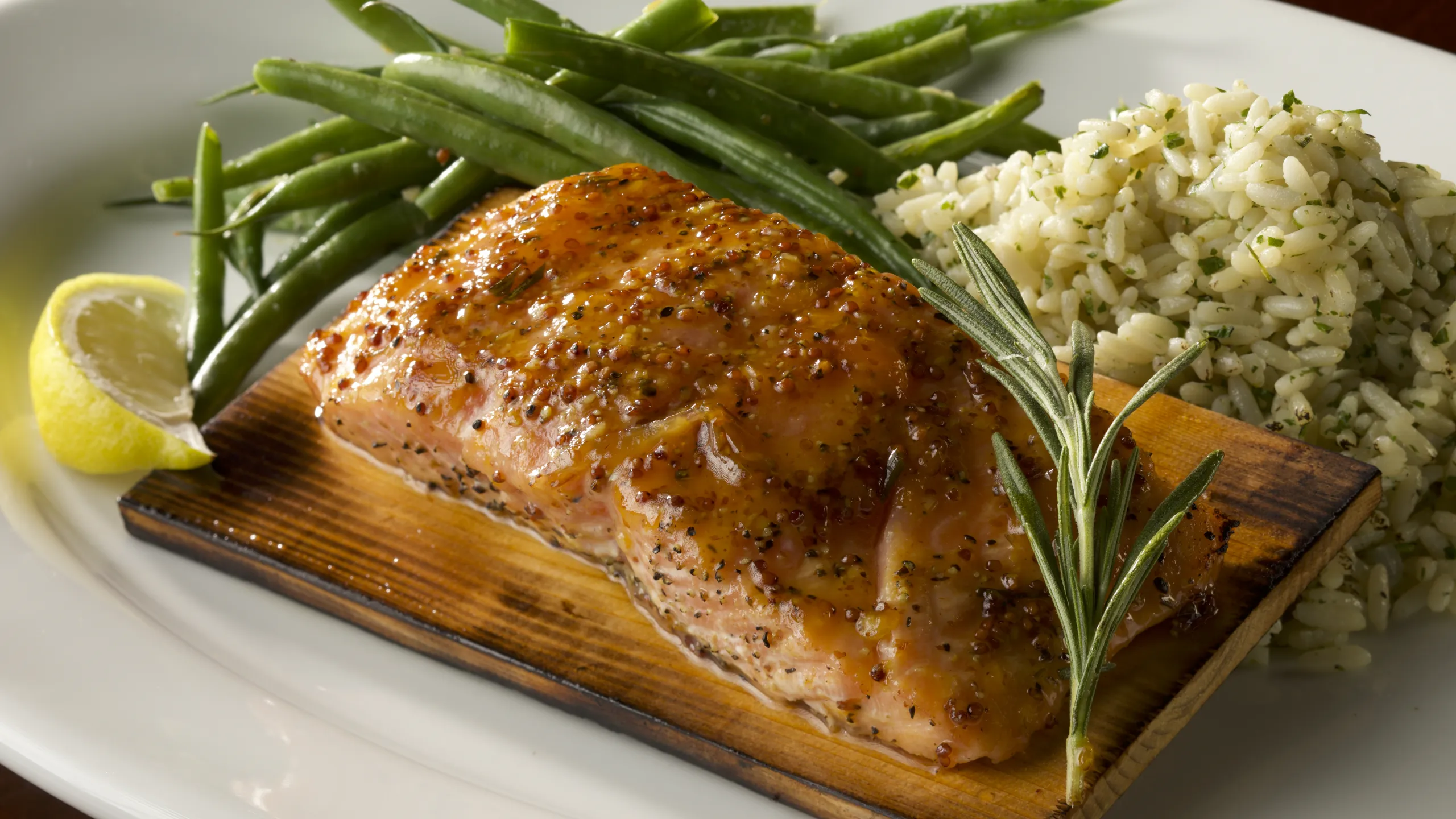For seafood lovers, choosing between tuna and salmon is a hard decision. Both are flavorful, nutritious options that make a satisfying meal for any appetite. That must be why they are two of the most popular fish choices in the United States.
The abundance of heart-healthy fats in salmon and tuna give these fish a meaty texture and stronger flavor profiles than white, flaky choices, like cod.
Color, Nutrition, and Taste
There are many great reasons to order market-fresh fish when out in Jacksonville dining, but unless you have the appetite of a whale, you probably have to limit yourself to one entrée. You already know that tuna and salmon are both delicious, but let’s look at some other fishy facts you may not have known.
Color
Not many people choose their meal based on color, but there are a couple of important color differences between tuna and salmon that might sway your decision.
Tuna
The two types of fresh tuna most commonly available in restaurants near Jacksonville are Yellowfin (also known as ahi) and longfin (also known as albacore). Yellowfin tuna should be a dark pink to light red color before cooking. Fresh albacore is lighter, creamy pink before it’s cooked.
The color comes from the myoglobin content in the fish. When heated, myoglobin turns white, which is why cooked tuna appears almost white, especially if overcooked.
Salmon
Salmon maintains its reddish-orange to deep pink color even after cooking. The salmon’s diet is responsible for its colorful flesh. The crustaceans and krill they eat are full of astaxanthin, which remains stable when heated.
Nutrition
When it comes to nutrition, you can’t go wrong choosing either salmon or tuna. Both are high in protein and provide a wide range of nutrients.
Tuna
Tuna is the leading choice if you are restricting fat intake. Yellowfin tuna contains about 1g of fat in a 3-ounce portion, and 91mg of that is omega-3 fats. It’s also slightly higher in protein, providing 17g.
Salmon
Fish is always a lean choice, but salmon is one of the richest foods from the sea. It contains 124 calories per 3-ounce serving of wild Coho—about 25 more calories than tuna.
It also contains 5g of fat (11g for farmed Atlantic), but that’s still low compared to almost 15g found in the same-sized portion of roast beef. If it’s omega-3 fats you’re looking for, you’ll be happy to know that wild salmon provides 1,120 mg, and farmed Atlantic contains almost double that amount.
Taste
Whether you’re selecting appetizers or entrées in your favorite Jacksonville dining establishment, it all comes down to taste. Both fish are sturdy enough to stand up to grilling, bold seasonings, and flavorful sauces and delicate enough to enjoy rare or raw (in sushi, for example). While they are both delicious, there is a big difference in how they taste.
Choose tuna if you prefer a lighter flavor and salmon if you’re in the mood for something more “fish forward.” Atlantic is milder than wild Coho or Sockeye, but all types of salmon have a robust and recognizable flavor.




